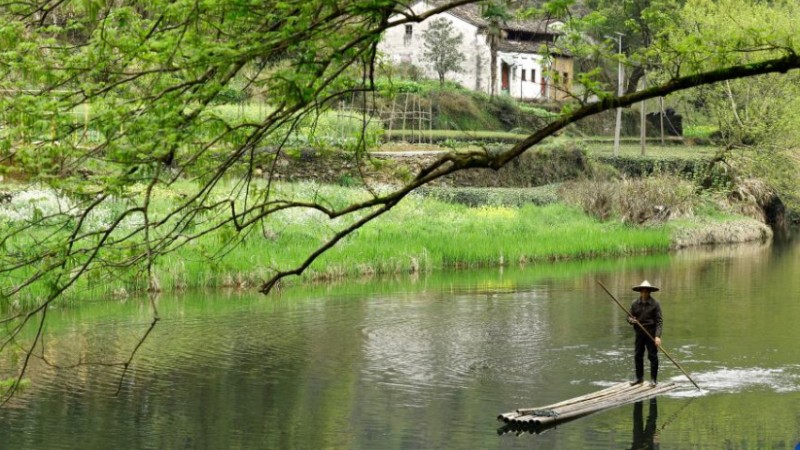Refined pottery art helps rural revitalization in SW China's Yunnan
Wanyao village in southwest China’s Yunnan Province, with a nearly 300-year tradition of making pottery, has advanced rural revitalization through pottery art by refining traditional pottery-making techniques, which are listed as a provincial intangible cultural heritage, and developing the pottery-making industry in recent years.
A total of 63 households in the village, located in Boshang township of Lincang city, are engaged in pottery-making, mainly producing earthenware in the form of vats, jars, bowls, pots, and kettles that are widely used in daily life.

Wu Baiyu (center), a professor at Yunnan University, explains the technique of making iron rust-glazed pottery with iron oxide pigments in Wanyao village, Boshang township, Lincang city, southwest China’s Yunnan Province. (People’s Daily/Zhang Fan)
However, the traditional craft didn’t bring wealth to local residents in the past. Local pottery could not be sold at a good price due to product homogeneity, said Yang Zhangting, an official of Wanyao village.
Fortunately, Wu Baiyu, a professor specializing in Yunnan’s ceramic history and art at Yunnan University, which offers pair assistance to Boshang township, led a team to Wanyao village.
Wu found that locally-produced rough and homogeneous pottery products lacked distinctive artistic characteristics, which explained why the village’s pottery was not popular.
With the help of Yunnan University, a 25-day seminar on advancing rural revitalization through ceramic design and innovation was held in autumn 2022 in Wanyao village, where 11 experts and scholars from colleges and universities including Tsinghua University, the Chinese National Academy of Arts, and Jingdezhen Ceramic University gave lectures to trainees, including villagers of Wanyao.
For instance, Wang Yaoling, a teacher rom Tsinghua University, taught trainees how to create distinctive earthenware products by using moulds and combining artistic forms such as carving and painting.
Zhang Yalin, a professor from Jingdezhen Ceramic University, lectured on the technique of making iron-rust-glazed pottery with iron oxide pigments, which proved suitable to the village’s pottery by experts.
Knowing that Wanyao village has been making tea ware including tea stoves, teapots and tea bowls since the Ming Dynasty (1368-1644), and that Lincang city is a major tea producer, Wu and his team suggested integrating the pottery-making industry and the tea industry and creating a brand to facilitate local development and rural revitalization.
“Now we have created over 500 iron rust-glazed tea sets, with the price of each of them increasing by 50 percent,” said Luo Xingqing, a provincial-level inheritor of the traditional pottery-making techniques.
Seeing rosy prospects, Luo hopes to fully make use of a newly established cooperative in the village to expand the production of tea sets by building production lines.
Many local tea makers have also begun working in the pottery-making industry.
Yang Fan, a young tea maker in Boshang township, participated in the seminar in Wanyao village. After Yang saw exquisite iron rust-glazed tea sets and the local government’s support for the development of the pottery-making industry, the tea maker engaged in the tea set business.
Photos
Related Stories
- Galaxy of water lanterns lights up night sky in SW China's Yunnan
- Dai people in China's Yunnan splash water to embrace their new year
- Traditional water-sprinkling festival celebrated in Mangshi, SW China's Yunnan
- Yunnan set to celebrate China Tourism Day
- Brian Linden: "I see a growth of optimism in China"
- Peony cultural tourism festival kicks off in Wuding, SW China’s Yunnan
- Baby Phayre's leaf monkey cuddles with parents in SW China’s Yunnan
- Digitalization spurs modernization of flower industry in SW China’s Yunnan
- An American finds his sense of home in southwest China’s Yunnan
- SW China’s Yunnan promotes integration of tourism with other industries
Copyright © 2023 People's Daily Online. All Rights Reserved.









